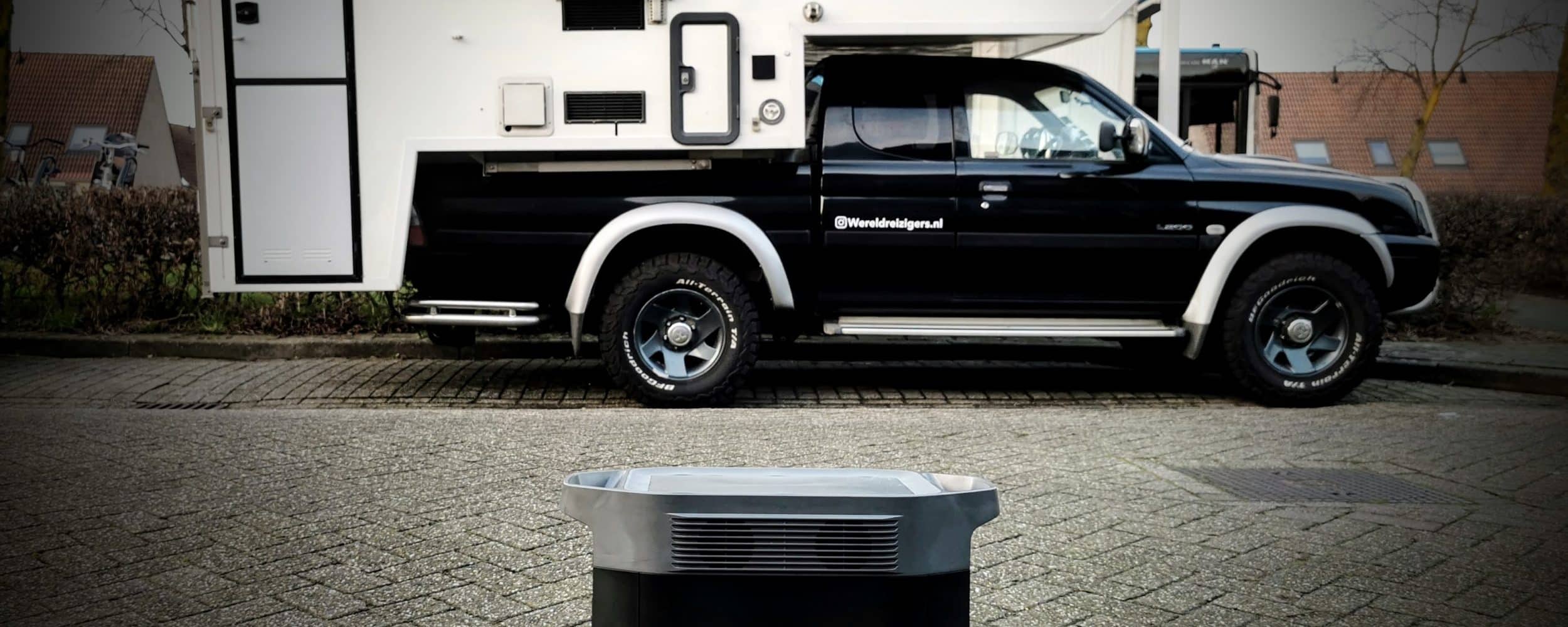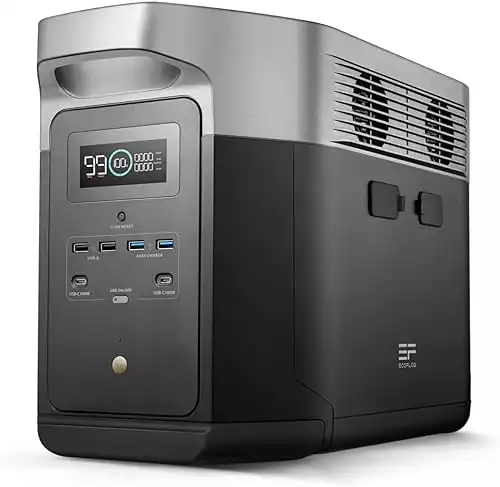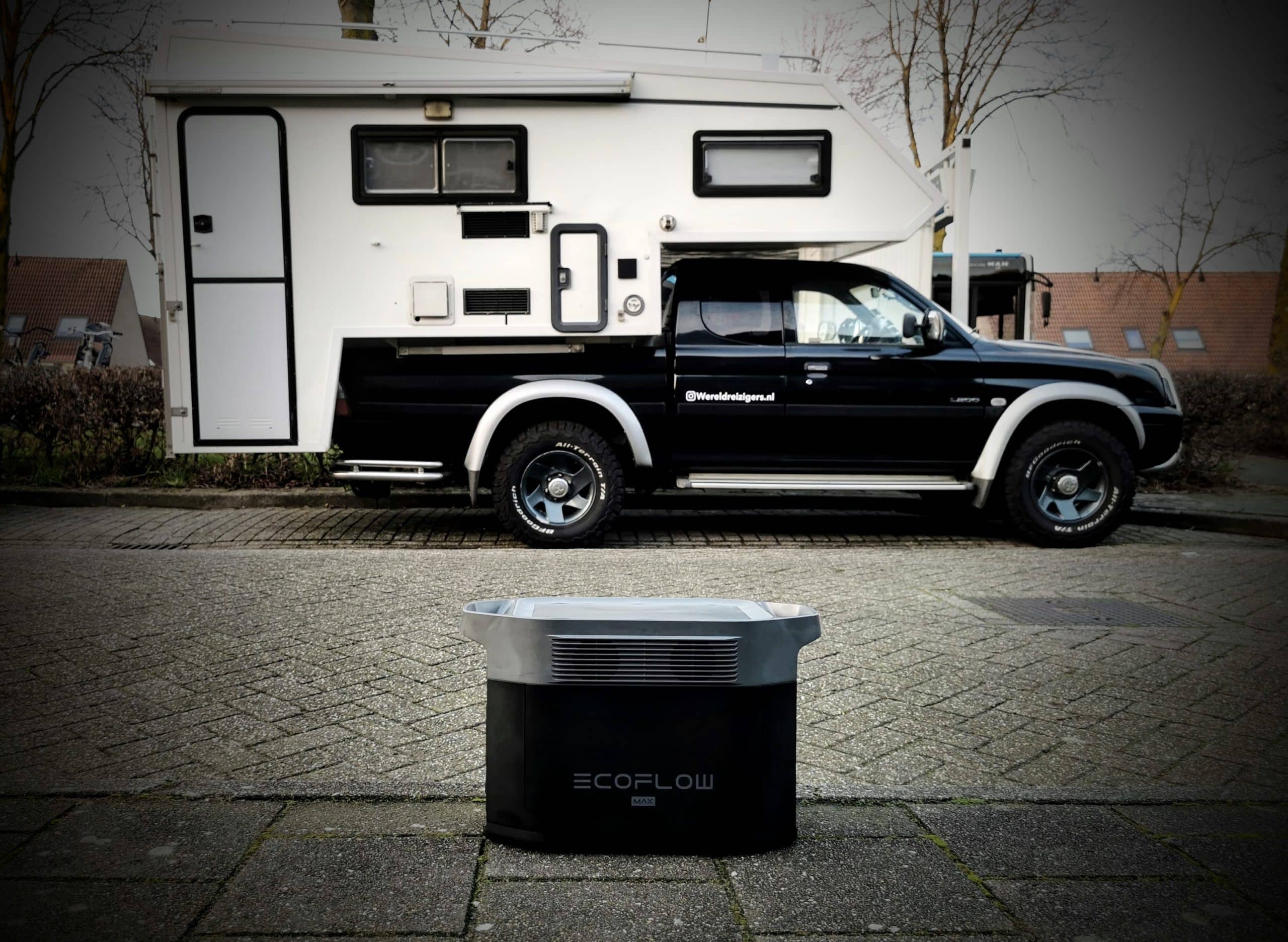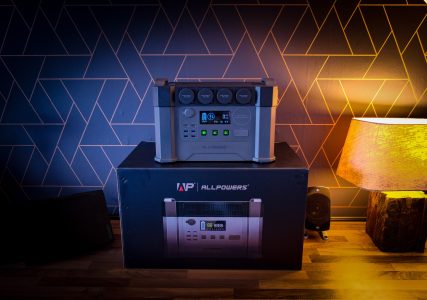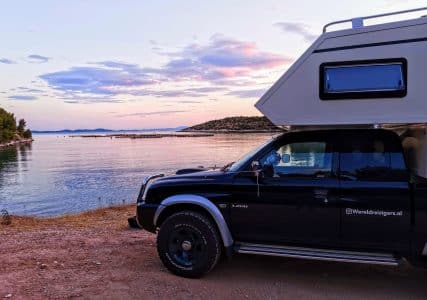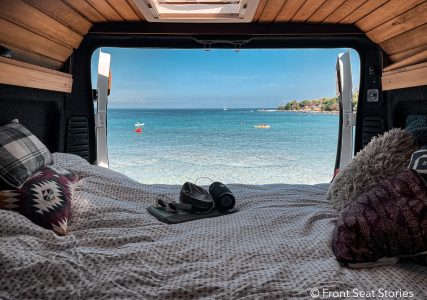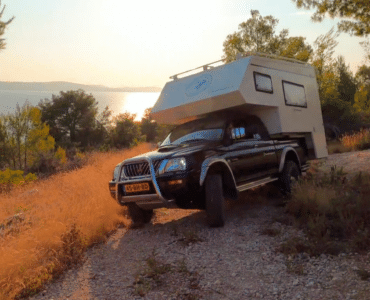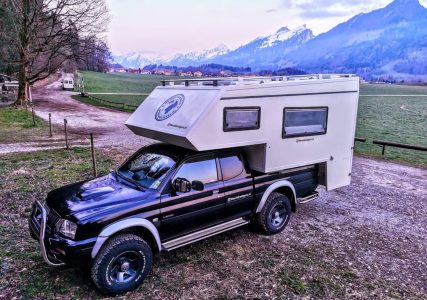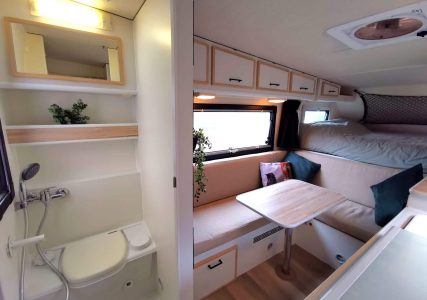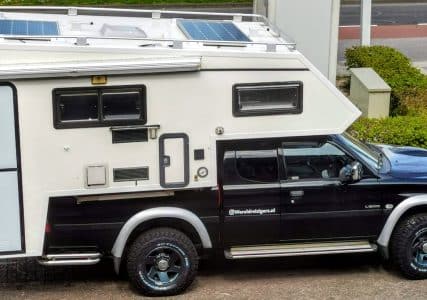Anyone who uses his or her (homemade) bus camper, camper or overlander vehicle travels or it van life live life, know how it is. You have to be economical with the energy you have with you. Especially if you camp a lot in the wild, you will have to think carefully about your power supply. Many of you have solar panels on the roof of your vehicle for that reason, so that you also have electricity at your disposal without any facilities. But how do you store all that energy? And what can you effectively do with it? In this article I will take you through the transition from a 'normal' household battery in our motorhome to a full-fledged power station. I am now the happy owner of one EcoFlow Delta Max Power Station, a new generation battery of no less than 2 kilowatt hours. In theory, this device is ideal for our soon-to-be trip to America with our own 4×4 motorhome, but how does it work in practice? That is what I have tried to find out for you in this review.
What types of batteries are there?
But before I go straight into the review of the brand new EcoFlow Delta Max Power Station dive it is good to know which different types of batteries there are.
Basically there are four general types of batteries or accumulators that most RVs normally use to power their systems. These are the old-fashioned 'wet' and 'dry' batteries and more recently also the lithium-ion and LifePO4 batteries.
Tip: if you want to directly share my practical experiences with the EcoFlow Delta Max If you want to read, use the table of contents at the top of the page.
Wet batteries
In wet batteries, the lead plates are suspended in water mixed with sulfuric acid; electrolyte. Wet batteries include starter batteries, stationary (or semi-traction) batteries and (full) traction batteries. In general, flooded batteries have the advantage of being cheap and simple. The disadvantage of these batteries is that they only need to be transported and mounted upright. These batteries are not completely sealed, which can cause leakage.
Starter battery – Starter batteries are mainly used in cars. This is because cars require a large amount of power for a short period of time when starting. Starter batteries may not be discharged beyond 20%. The advantage of a starter battery is that it is the cheapest type of battery. The disadvantage of this type of battery is that the capacity can deteriorate rapidly due to deep discharge and recharging. This is caused by sulfation. This creates a hard, non-conductive layer on the electrodes.
Stationary battery – The stationary or semi-traction battery provides a relatively low output. This type of battery is therefore often used as a backup in the event of a power failure. The stationary battery has two advantages over the starter battery. Firstly, stationary batteries can be further discharged, up to 50%. In addition, these batteries are more resistant to sulphation.
Dry batteries
Dry batteries, also known as VRLA (Valve Regulated Lead Acid) or SLA (Sealed Lead Acid), include Gel batteries and AGM batteries. These are batteries that have no liquid content. Unlike wet batteries, these batteries can be mounted and transported in all possible positions.
Gel battery – A gel battery suffers less from sulfation and self-discharge than a wet battery. In principle, a Gel battery is also maintenance-free. However, this type of battery is more expensive than a wet battery and they deliver less power. Finally, they are also sensitive to overcharging, which can eventually lead to permanent damage to the battery. Gel batteries are suitable for use in security systems for electric scooters and electric bicycles. In addition, they are also suitable for use as a starter battery.
AGM battery – The AGM battery, also known as a lead-acid battery, generally provides better performance than a wet lead battery. AGM batteries are also more resistant to high and low temperatures, have little self-discharge and have a long life. However, they deliver a lower current than gel batteries. For these reasons, AGM batteries are also used as storage for solar and wind energy. In addition, they are used in more expensive vehicles and in extremely cold areas.
Lithium-ion Batteries
Lithium batteries are different from other batteries. A lithium-ion battery is a battery made of a light metal. This technique is characterized by its high energy density. These batteries can generally store more energy than a regular dry or wet battery and are better at maintaining voltage. In short, you can use more of the stored energy compared to traditional batteries. The lithium-ion batteries are therefore currently the most commonly used batteries for tools, laptops and batteries smartphones.
Also read: Why you should NOT take pictures with your smartphone during a world trip
The advantages of Li-ion are the low self-discharge, no memory effect and the favorable energy/weight ratio. The latter is also an important one, because weight is always an important point for vanlifers, campers and overlanders. It is therefore not for nothing that lithium-ion batteries are becoming increasingly popular in the vanlife and camper world… Although you will still have to dig deep into your pockets for it.
LiFePO4 batteries
Finally, there are also the LiFePO4 batteries. A LiFePO4 battery is a new type of lithium battery, but made with lithium iron phosphate. It has all the advantages that we are used to from a lithium-ion battery, but the LiFePO4 battery takes it one step further in terms of efficiency and safety.
The lithium and iron phosphate based technology is an improved version of the lithium-ion battery. LiFePO4 batteries are more resistant to overheating. They are also a bit more efficient than the lithium-ion variant.
Unfortunately, this new technology does come with a price tag. At the moment a LiFePO4 battery costs about 8 times as much as a wet or dry battery with the same capacity. Compared to a regular lithium-ion variant, you still pay two or three times as much. It is expected that the prices of these new types of batteries will fall again in the coming years.
At the moment, in my opinion, it is not very interesting from a cost-technical point of view to purchase a LiFePO4 battery. Unless of course you have enough money and want the best of the best in your vehicle…
AGM household batteries in practice
Now that you know what different types of batteries there are, let's continue with a field test. For the past year I have traveled with 2 AGM household batteries in my motorhome. About a year ago I two Victron solar panels with a Victron Bluetooth battery charger on our 4×4 camper have it installed.
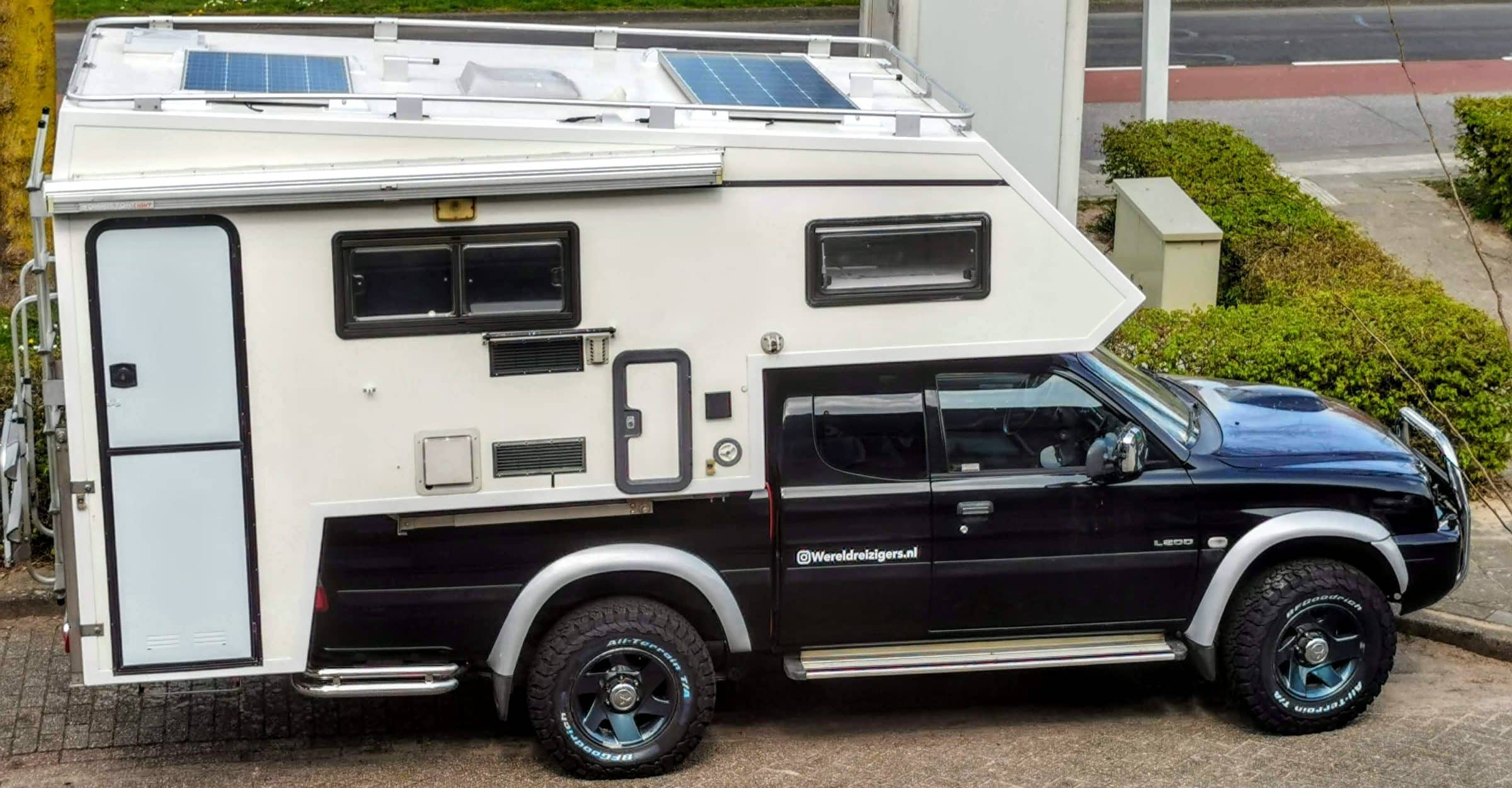
I also immediately opted for not one but two new AGM household batteries. I wanted to make sure I had enough energy with me on the road. Both AGM household batteries have a capacity of 105Ah. So in total I have 210Ah of household batteries in the motorhome, twice as much power than was recommended to me.
That's a reasonable amount of power I thought I could handle. In principle this was correct. During my travels I have Switzerland en Croatia I was actually not or hardly without power while I often had the Maxxfan roof fan on for hours and the 12v cool box was also supplied with power 24/7. Still, it didn't take much to drain the batteries. I will explain more about that below
Recharge via the dynamo and campsites
First of all, it is good to know that during these trips I made some kilometers almost every day (so that the batteries are also recharged via the dynamo) and I was also regularly at the power at a campsite. The battery capacity therefore gave a bit of a distorted picture and we deliberately sometimes went to a campsite because we could get back to mains power there. We soon realized that boiling water, using a hair dryer or turning on the oven was really no fun with these two batteries. We therefore decided to visit a campsite more often than we would have liked in advance and thereby actually passed our initial goal, free camping for days in nature.
Converter for 220v in the camper
But what is this about? To start with, we have an inverter in the camper, which ensures that you can use regular appliances via the household batteries. This is super handy if you are on the road and camping wild, but in practice this turned out to be quite disappointing. You are wrong about how much power regular household appliances use!
Even if you have an inverter of, for example, 2000 watts connected to a double battery setup like ours, try boiling water with an 1800 watt kettle for fun. It's bizarre how quickly a kettle, oven or hair dryer drains your batteries! You can switch on an 800 watt mini-oven, but after baking 2 sandwiches in 12 minutes, the whole thing is really empty.
Boiling water = batteries empty
Boiling water is much worse. Our experience is that when you boil a small pitcher of water once or twice for coffee or tea, your regular AGM household batteries have already been drained. They are then not completely empty, but because they cannot maintain the high voltage for the inverter, the inverter stops working and so your device shuts down. Now this was not such a problem during the day in the sun, the solar panels are now charging the batteries again. But in the evening this was more problematic because empty batteries mean no fan and no cooling for the cool box at night, with all the consequences that entails.
Off-grid camping = energy shortage
So the few times we went camping 'off grid' for a few days, it soon became clear that the energy storage is the weak point in the system. Even when we went camping with a strong sun on a small beach on the island of Bol and the solar panels did their job well, we ran out of energy.
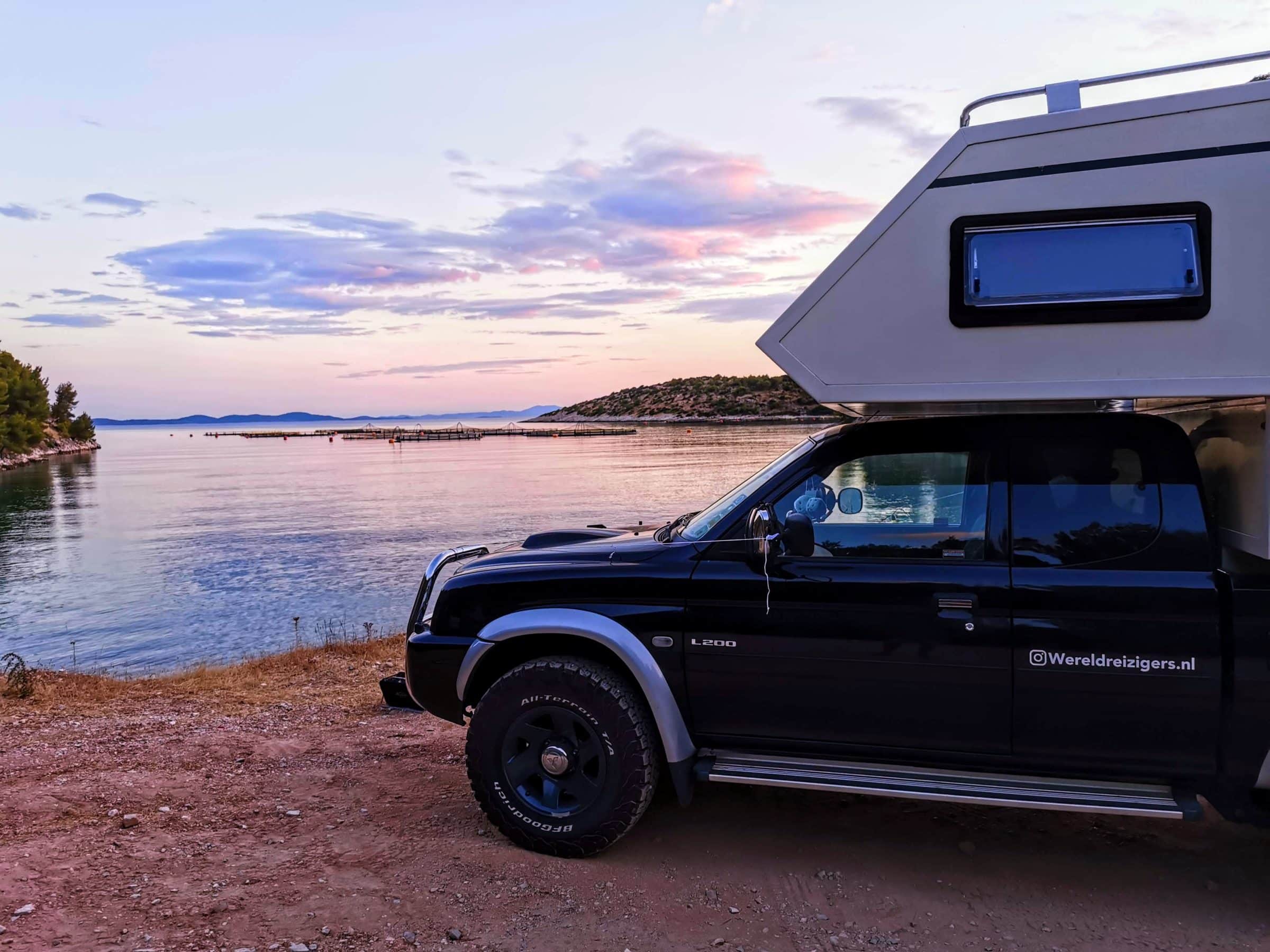
Even though we didn't use the kettle, oven or hair dryer those days – the batteries were empty in the morning. Not surprising in itself because I charged all electronic equipment overnight, the roof fan was on non-stop (it was very hot there), and because the cool box had to work hard 24/7 to keep things cool.
Yet something struck me. The solar panels did their job well and before noon both batteries were fully charged again. The other half of the day, however, the solar panels did virtually nothing (I could see that in the Victron app), because the AGM batteries were already full. So all 'wasted' or lost energy. In order to make optimal use of the power of these solar panels (a total of 300 watts), I therefore needed more battery capacity.
Looking for more battery power
With our upcoming trip to America and Canada in mind where we will ship your own camper to America and travel there for a year, so I started looking for more battery power. I want to depend as little as possible on campsites and as much as possible wild camping in nature. I want to be able to just be somewhere off-grid for a week without having to reconnect to a charging station or start the car to recharge the household batteries via the alternator!
And yes, we luxury horses would also like to be able to boil unlimited water, make coffee, blow dry hair, use the oven and have the ventilation and cool box running at full capacity 24/7. So quite a few requirements.
Lithium-Ion batteries for the motorhome
So I started looking at other options and soon ended up with Lithium-Ion batteries. For about 350 euros you have a comparable Lithium-ion battery of 100Ah. In principle, this is the same amount of power as an AGM battery of 100Ah, but the Lithium-ion is much better able to keep the voltage at such a level that the inverter will work much better and longer. Simply put, you can use much more % of the stored 100Ah energy.
That seemed interesting to me so I considered buying two of these guys as replacements for the AGM batteries, together about 700 euros. But before I bought this one, I first looked further, what is for sale?
power stations
In my search for normal lithium-ion batteries for the camper, I quickly came across a number of YouTube videos where (often American) RV camper travelers talked about 'portable power stations† These are in fact large portable batteries with a lot of power. So much power, in fact, that it can be used to provide air conditioning in their motorhome with power for hours! I needed to know more about that so I decided to dive deeper into it. After some quick Google searches, the following became clear to me:
A few years ago there was really only one brand for portable power stations: Goal Zero† Fortunately, several new players have entered the market in the last few years, causing prices to drop and that is beneficial for us, the consumer. The four best-known brands of power stations at the moment are (in no particular order):
- Goal Zero (Since 2014)
- EcoFlow (Since 2020)
- Bluetti (since 2019)
- Xtorm (since 2017)
Unfortunately I can't say much about the quality of these brands. However, the only brand that has been on the market for a while is Goal Zero. When I read the reviews of Goal Zero products, most people seem extremely satisfied. Goal Zero makes sturdy devices with a lot of power and all kinds of inputs and outputs to charge everything. Their products are mainly intended for people who are often 'outdoor'. Below is a photo of their most popular product, the YETI 1500x.
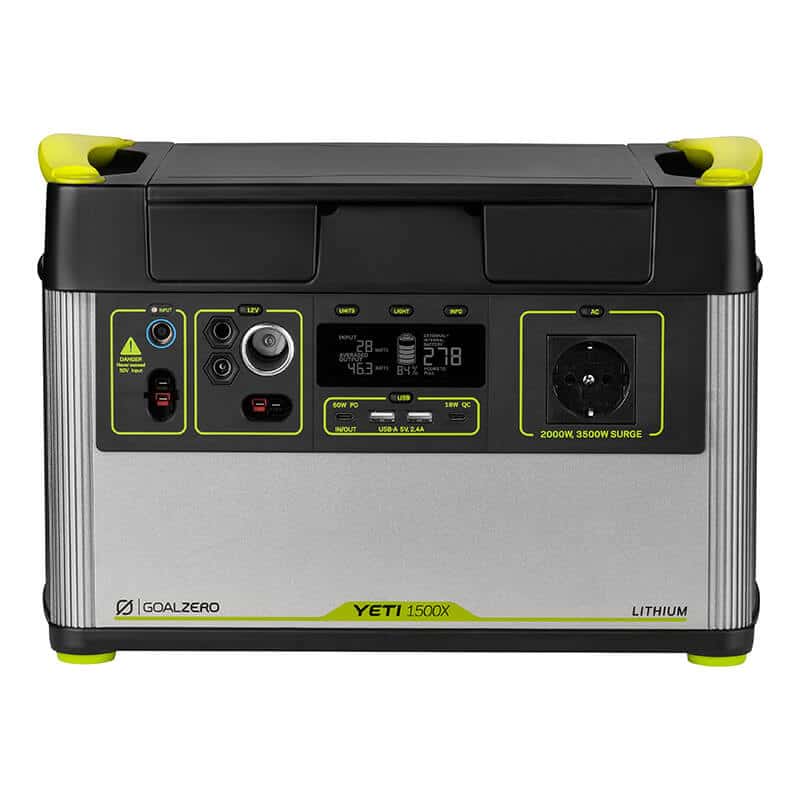
EcoFlow Delta Max
I continued my search and ended up at EcoFlow. EcoFlow is a relatively new American brand which is Kickstarter campaign raised millions in a short period of time. With this money they could bring their prototype to production. After a successful Kickstarter campaign, the first EcoFlow Powerstations were delivered in September 2021 and the first online reviews are promising. It also quickly became clear to me that nobody in the Netherlands has written anything about these EcoFlow Powerstations so it seemed like something to be one of the first.
Collaboration EcoFlow
So I decided to contact eco flow. I was very curious about their product and was open to a possible collaboration via Wereldreizigers.nl.
The EcoFlow Delta MAX is a portable Lithium-ion power station with a capacity of no less than 2016wh. This device makes inverters and charge controllers for solar panels superfluous.
The capacity is expandable and with 4 x 2400W (4600W peak) AC outputs, numerous 12v and USB connections, it is suitable for many applications both indoors and outdoors.
Super fast charging via 230v. Combined charging via 230v, 12v or solar panels is possible. Very popular with motorhome and vanlife enthusiasts.
We have installed this device in our motorhome and it's really fantastic to have so much power at your disposal† We grill, cook, cool almost everything electrically now.
- Large capacity
- Super fast charging
- 100w (!) USB-C connections
- 2400W with 4600W peak power
- Charging via 230v, 12v or solar panels
- Pricing
- Weighs 23 kilos
eco flow then forwarded me to solarpowersupply.nl. This company is one of the first suppliers of EcoFlow devices in the Netherlands and a collaboration was soon established. A few days later I had it EcoFlow Delta Max, the 2 kilowatt-hour variant, at home!
I put the plug in the socket to charge it and for fun I immediately started boiling water via the device. This went smoothly, you can see on the screen in the video below that the device is charging and at the same time provides the kettle with power.
The first tests I've done are extremely positive and that's not just because I got the product for free... I've put the device through its paces over the past few days and I've done several practical tests to test what the device is up to is capable of.
Photos Ecoflow Delta Max
Since the original product photos are a lot better than my own, here are the official images of the device first. On these photos you can clearly see what is on and on in terms of connections. Click on the photos to enlarge them.
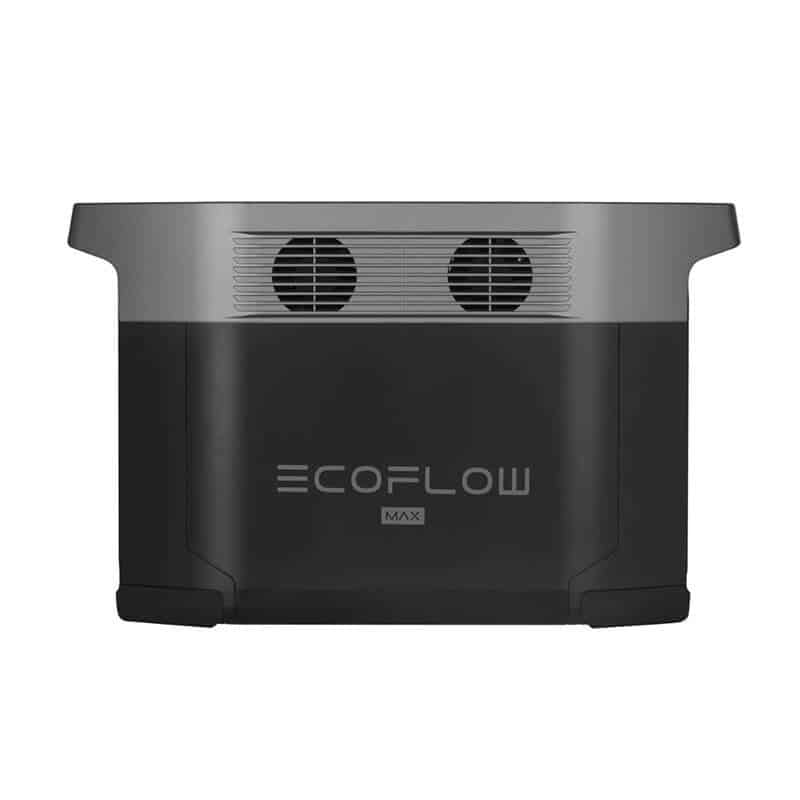
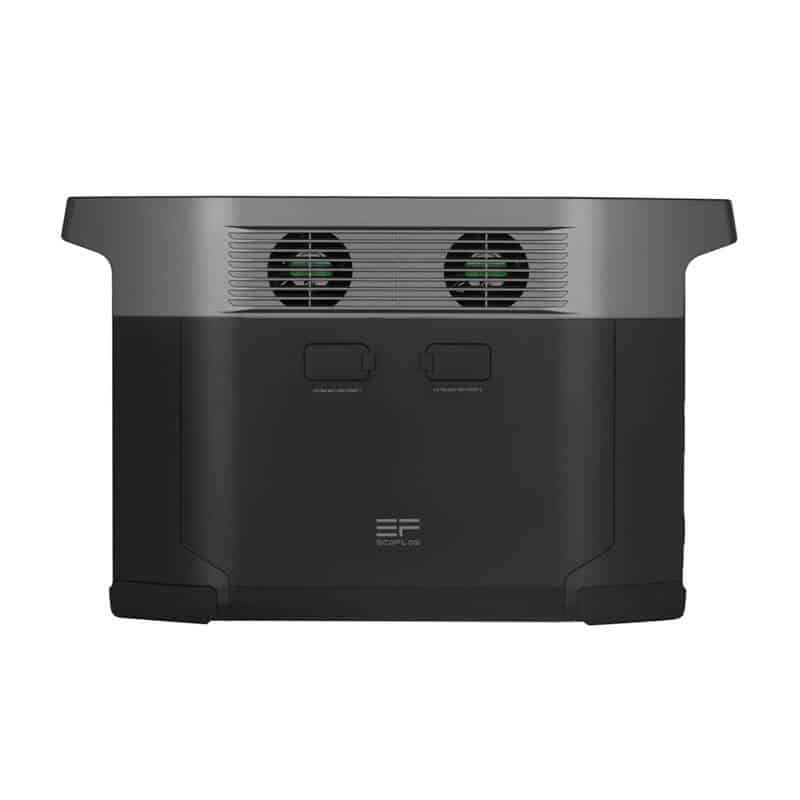
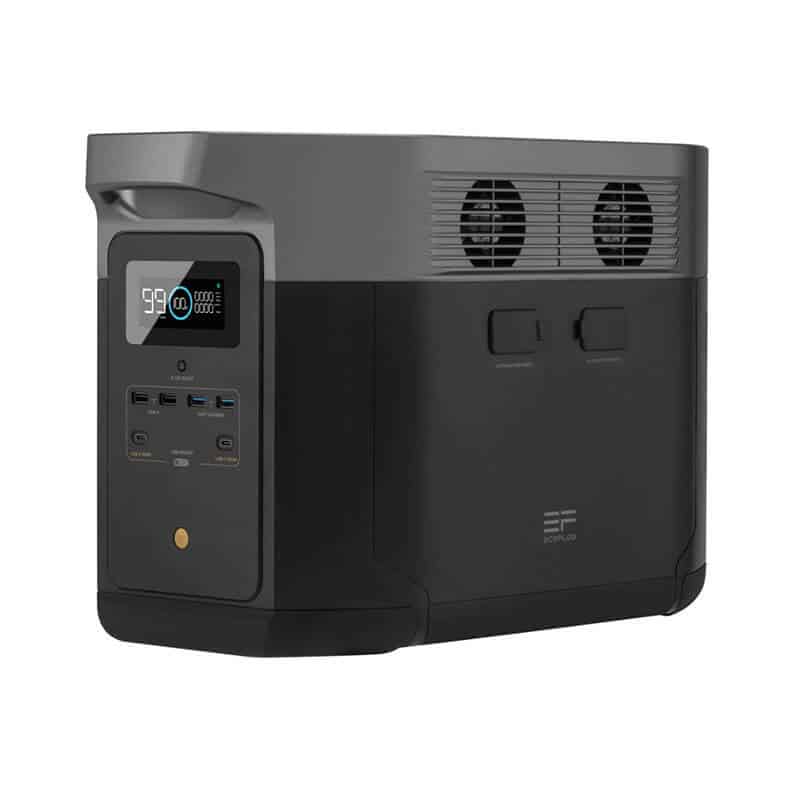
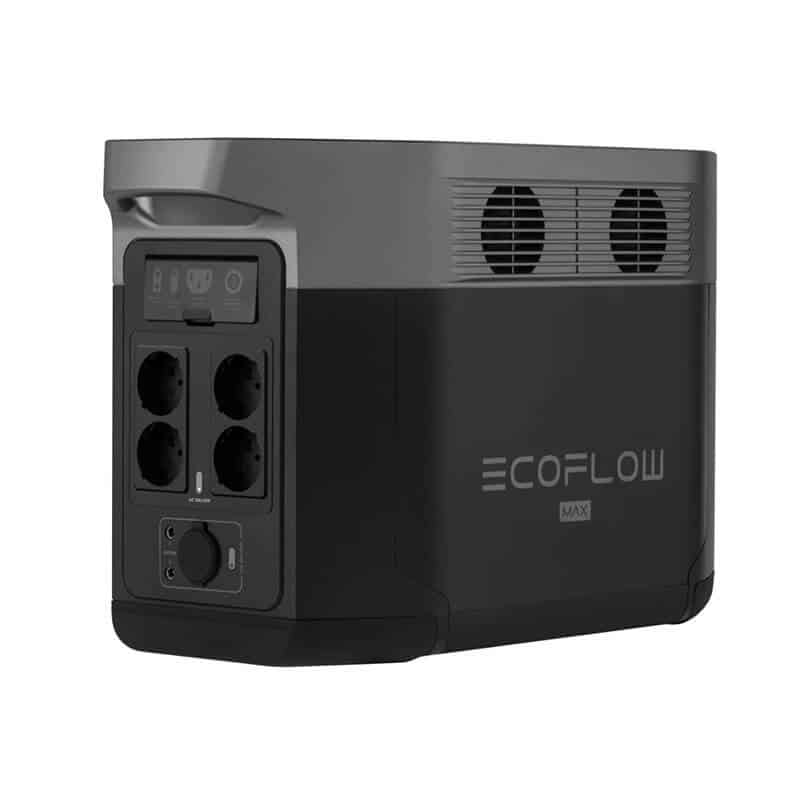
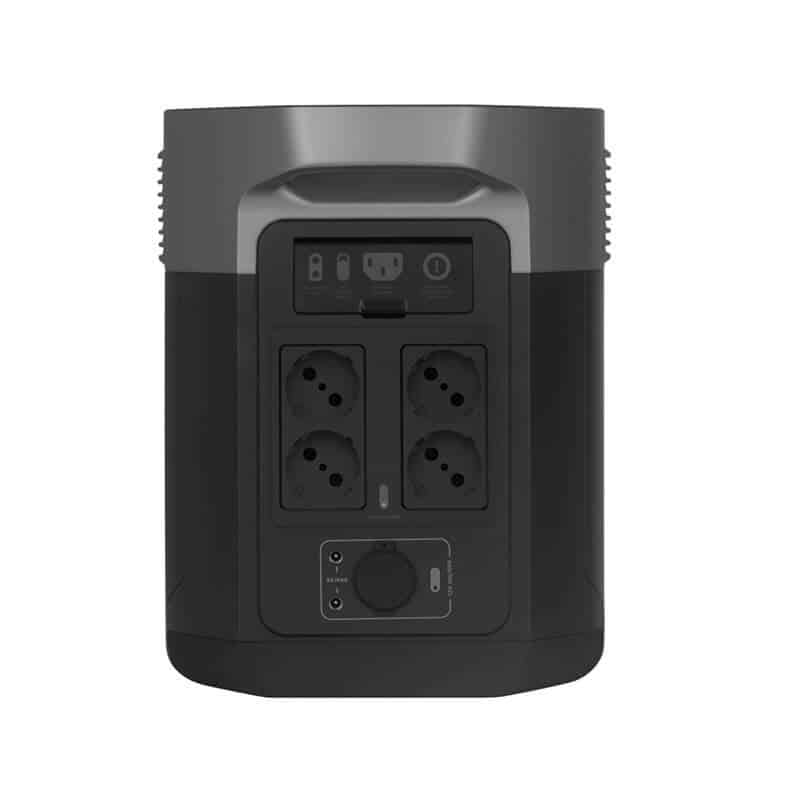
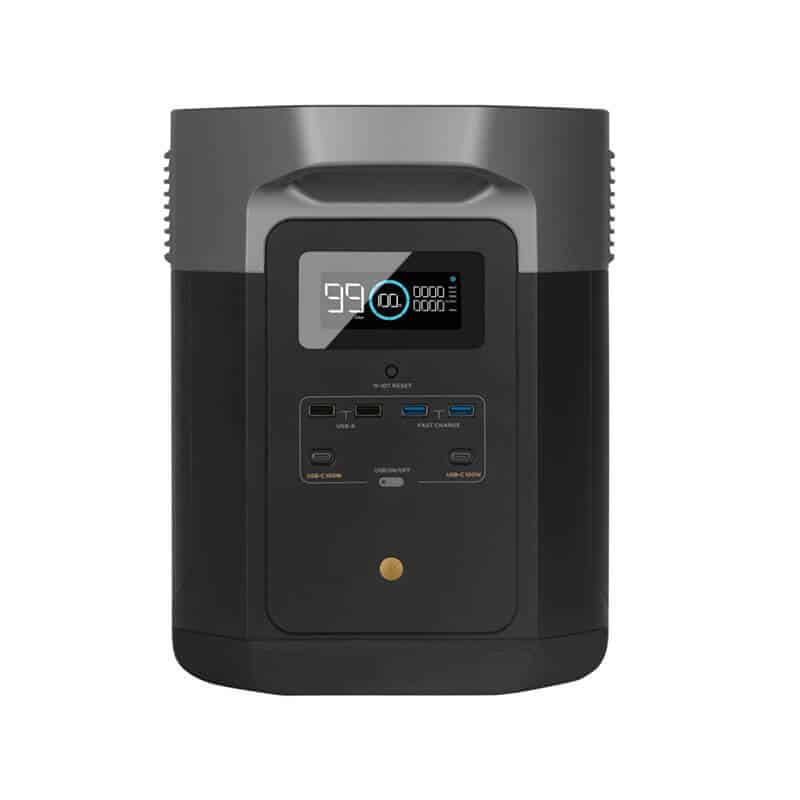
Product description EcoFlow Delta Max
The Ecoflow Delta Max Power Station – EU version is a unique power station with a capacity of 2016Wh, which offers the possibility to expand to a capacity of no less than 6 kWh. Virtually any device up to 2400W can be powered. This makes the power station suitable for charging not only smartphones, tablets, laptops, drones, lighting, TVs and small refrigerators, but also equipment with a higher power. Think of camping kettles, coffee makers and water pumps as an example.
The Ecoflow Delta Max Power Station has an integrated 2016 Wh Lithium-Ion battery. If the capacity is not sufficient, the capacity can be tripled to 6048 Wh. This is possible with the extra Delta Max battery from Ecoflow. In this way, your devices can be supplied with power for even longer.
Thanks to the X-Stream technology, the Delta Max can be charged from 65 – 0% within 80 min. This allows the charging time to be limited to 2 hours. In addition, the power station also has an advanced solar input of 800 W / 11 V – 100 V. If you also use the mains adapter, you can charge the Delta Max with 2600W. In this way, the charging process is maximized.
Thanks to the EcoFlow app you have at your fingertips: information about the status of the charging station, the control panel and charging options. The Delta Max has a WiFi function, whereby the Delta Max can easily be controlled remotely via the WiFi router.
The Delta Max's Battery Management System is designed to monitor individual cells several times per minute. As a result, the capacity is used as best as possible, the battery is protected against overcharging and you benefit from a longer life.
Specifications Ecoflow Delta Max
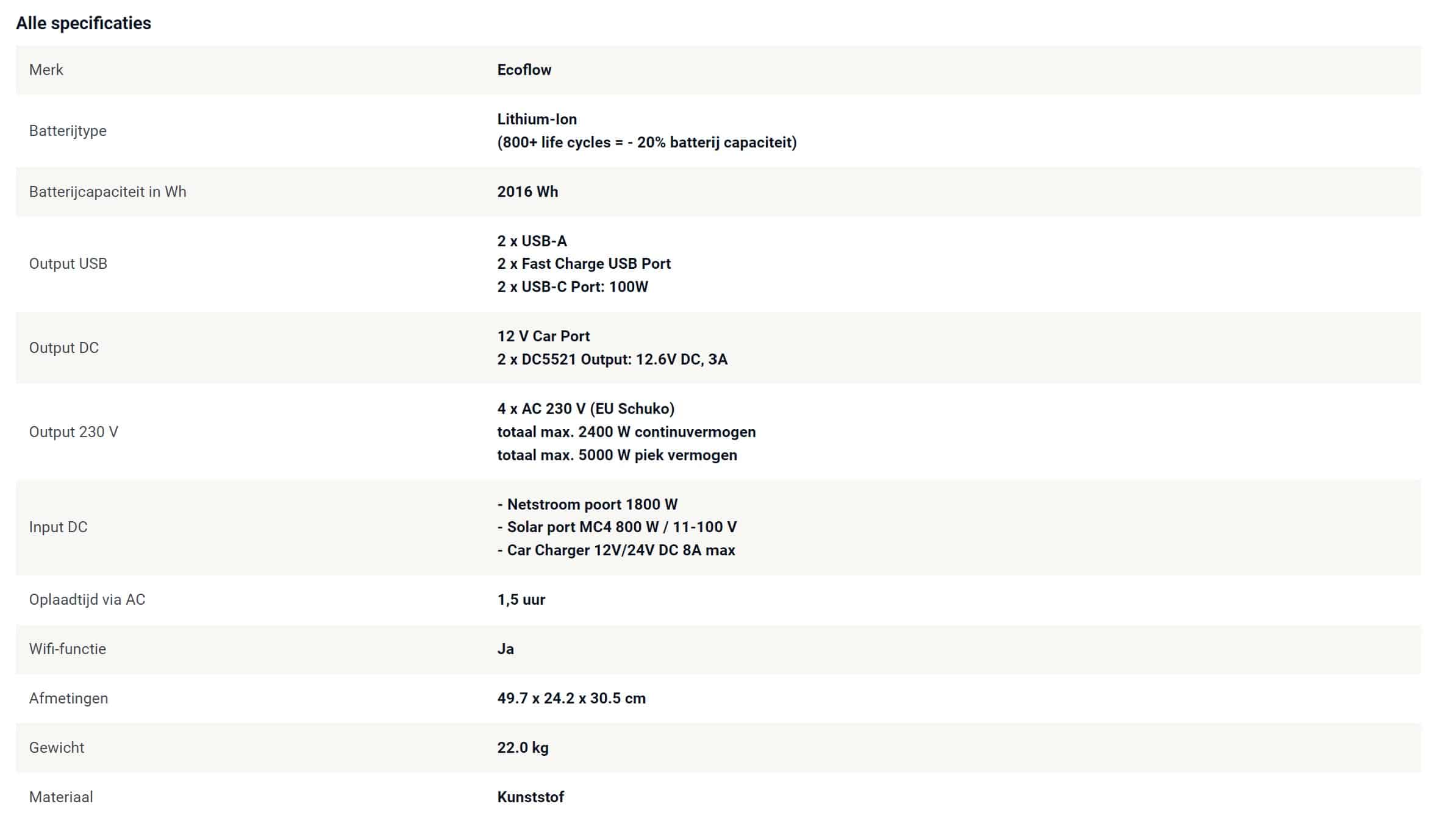
Review: Ecoflow Delta Max in practice
Now that you are familiar with the official specifications and know what connections there are, I will continue with the practical review. This includes connection, charging and use.
Charging the Ecoflow Delta Max
One of the reasons I went for the Ecoflow Delta Max is because you can charge it in different ways. You can fully charge it in 1,5 hours via the socket. It then charges approximately 1300 to 2000 watts continuously depending on the amount of current in the battery and the measured temperature.
In practice (in your motorhome or boat), however, the battery will mainly be charged via the solar panels and/or the dynamo of your vehicle. Separate connections can be found for this on the back of the device and the necessary cables for this are supplied as standard.
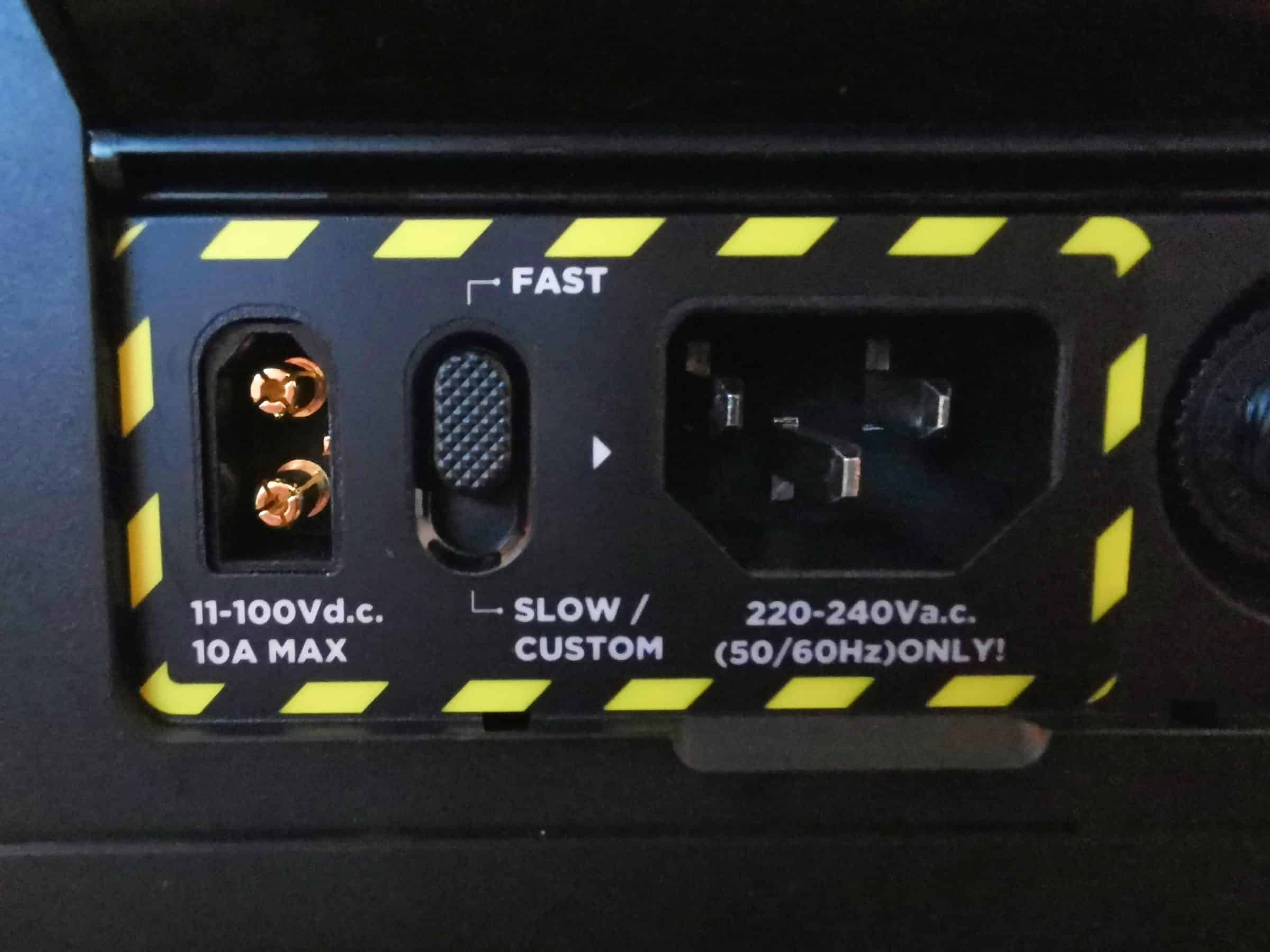
custom charging
What is extremely useful is the button in the middle: fast/slow/custom, or custom charging. This allows you to set the charging speed yourself. You might not think it, but this can really be a godsend! For example, at a campsite with limited power supplies. Or if you have an inverter in your vehicle with a maximum power below 2000 watts. You can if you press the button slow/custom set the charging capacity yourself in the app…
The charging power of the socket can be reduced all the way to 200 watts. You can reduce the car input to 4A (about 45 watts), so that the device does not immediately drain your entire battery.
See the screenshots of the various app settings below (click to enlarge).



What is also good to know is that you can connect almost all types of solar panels directly to the Ecoflow Delta Max. It already contains a charge controller from 11 to 100 volts (max 10A). When you build a new motorhome, I would absolutely consider using the built-in charge controllers. You no longer have to purchase and connect charge controllers separately.
Connecting to an existing system
For us, however, the situation is different. Because we have already installed an entire installation with solar panels, regulators and car chargers in our motorhome, we opt for a different route. We therefore leave the current system in the motorhome intact as much as possible because it is a) less complex and less work and b) ensures that we can also easily remove the Ecoflow Delta Max if we want to borrow it or use it elsewhere outside the want to use door.
We have now devised a simple construction in which we have removed one AGM household battery. The remaining AGM battery of the motorhome is connected directly via the EcoFlow 12v car charger cable. As a result, the solar panels and alternator charge both the AGM household battery and the Ecoflow Delta Max via the existing system in the motorhome and in this way we can simply regulate the speed of charging in the App.
The only thing we have to pay attention to is that the Ecoflow Delta Max does not completely drain the AGM household battery, which can cause it to break. That is why a small switch has been placed in between so that I can interrupt the charging of the Ecoflow Delta Max at night when there is no sunlight.
Missing feature: I asked EcoFlow support if it might be possible via a firmware update to build this option into the app - it would be great if you could manage this yourself without a physical button. For example, you can set that when the household battery falls below 12v, the EcoFlow stops charging to save your household battery. Hopefully more on that later.
Features of the Ecoflow App
What is a nice feature is that you can enable various timeouts in the App. Particularly that of the AC (the 4 sockets) at the back is nice because this is a powerful inverter with a peak power of 5000 watts. Leaving this inverter on continuously consumes unnecessary power when you are not using it.
You can also remotely switch the various outgoing connections on and off via the app (middle image of the app a little further back above), without having to physically reach the buttons. This is useful if you place the EcoFlow Delta Max under your sofa or in a cupboard, for example.
Cameras, phones, drones and laptops
Now that the EcoFlow Delta Max was fully charged, I first started charging all kinds of equipment that I use a lot while traveling. I connected all my gadgets: a mirrorless camera, a battery charger for the camera, the GoPro, the battery charger for my drone, a smartphone, two power banks and a laptop.
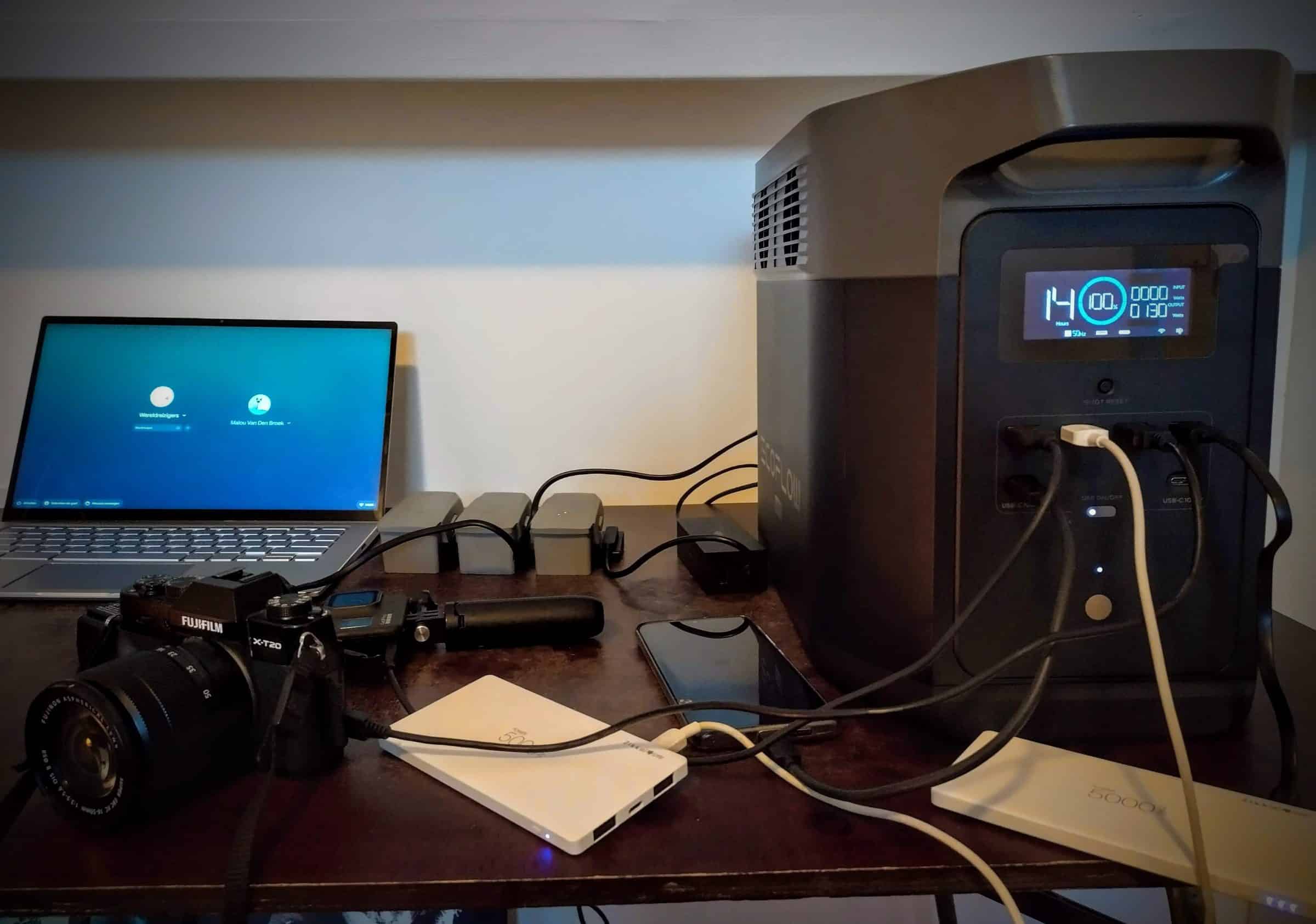
I used both USB, USB-C and AC (wall sockets) from the device to charge all the gadgets. You can see on the screen that all these devices simultaneously demanded about 130 watts of power from the EcoFlow Delta Max.
Almost all connected gadgets were empty or nearly empty when I started and after 1,5 hours of charging I found that almost everything was charged again and I had 98% battery power left.
Because several gadgets were already full and therefore no longer demanded power from the EcoFlow Delta Max, I saw only 22 watts of output power going to the laptop that was still charging. All in all, charging all these gadgets at once was a breeze for this device. That much was already clear.
Fan, LED TV and electric blanket
The first test was successful, but I was also very curious about a real camper and camping scenario. How would the EcoFlow Delta Max fare with devices that are used a lot in real van life or camper life?
I tried to work out a realistic scenario and came up with the following:
- Night has fallen (so solar panels do nothing)
- You camp with your bus camper or camper somewhere where it is cold
- The roof fan is on to prevent condensation at night
- The TV is on before you go to sleep
- Your electric blanket is on to keep you warm (all night!)
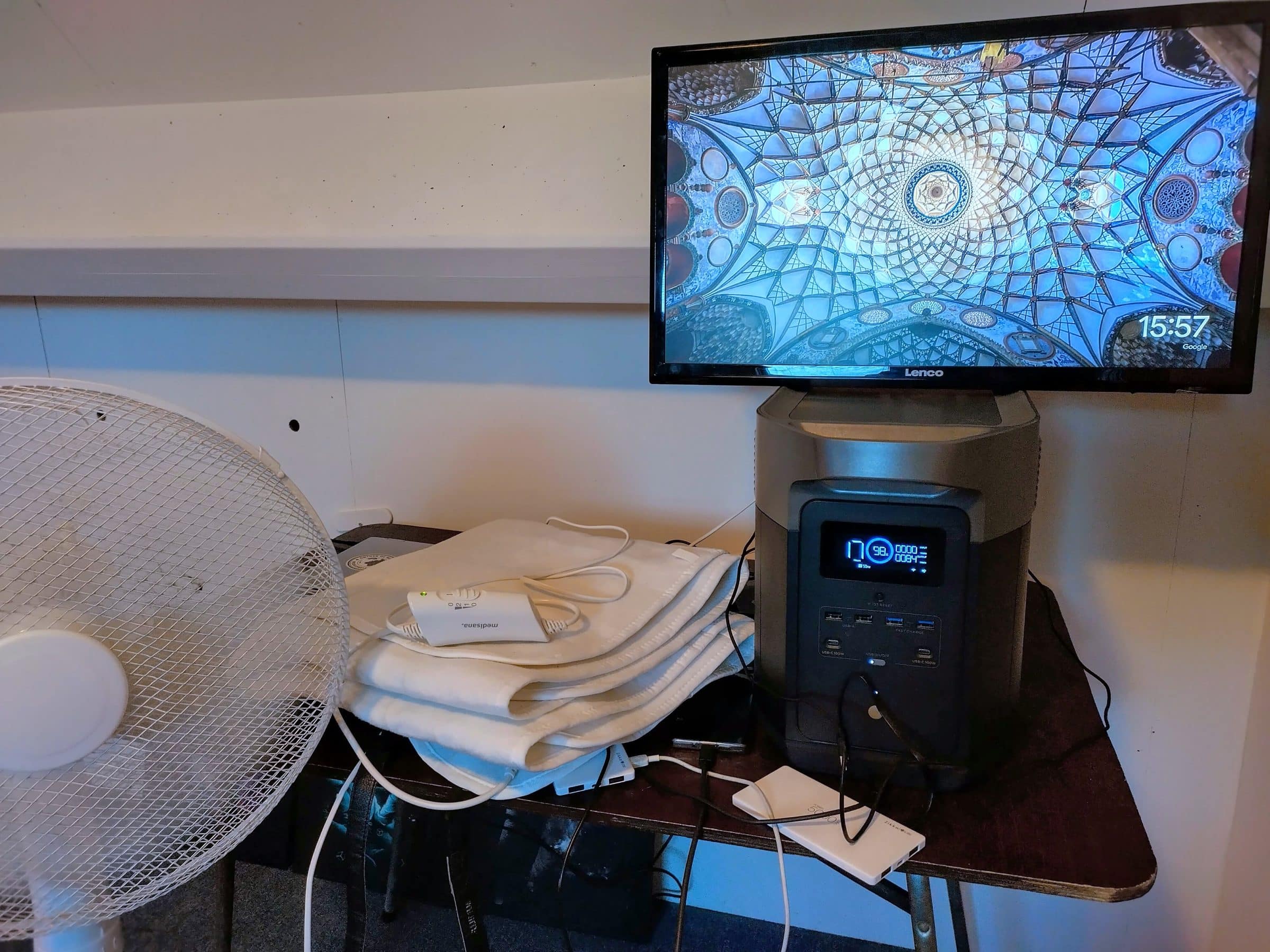
These three devices together use about 84 watts continuously. With the 98% that I had left, the EcoFlow Delta Max could easily keep this up for another 17 hours (see screen). Without the 24-inch LED TV, this was about 50 watts and the device could sustain this for more than 25 hours.
In practice, this means that you can leave an electric blanket and roof fan on all night and then have more than 65% of your battery capacity left in the morning. Cheers!
Kettle and Hair Dryer
Time for the heavier work. So far I couldn't really give the EcoFlow Delta Max a hard time. I decided to expand the realistic camping scenario and add a kettle and hair dryer.
- Boil 1,5 liters of water with the kettle for coffee and tea
- Blow-dry hair for 6 minutes (the woman just showered :D)
While the fan and TV are still on and using 52 watts, I turn on the hair dryer on the hottest setting. The wattage immediately shot above 1000. The 1800 watt kettle also turned on. The EcoFlow Delta Max easily accommodated the short peak voltage of +- 3400 watts (the maximum peak voltage = 5000 watts), and then neatly reduced it to just under 2400 watts, which is the maximum continuous power.
It took about 6 minutes to boil the 1,5 liters of water (it's a hefty pitcher) and I filmed the whole thing, seen in the video below.
What you can see from the video is that as soon as I turn on the kettle, the hair dryer makes a little less noise. This is probably because the maximum of 2400 watts is exceeded (the hairdryer requires a maximum of 1000 watts, the kettle a maximum of 1800 watts). Nevertheless, the devices continue to work properly and you will not notice anything else.
I find it amazing to see that the EcoFlow Delta Max is able to do so many things at once. Both the charging of various devices and heavy household appliances with power. A great result.
The fans are quite disturbing
However, not everything about this device is perfect. The biggest downside is the sound produced. As soon as you put the plug in the socket or the solar panels provide a lot of charging power, the EcoFlow fans turn on and these fans make quite a lot of noise. They are quite small so they have to work hard to keep things cool. That makes an unpleasant sound if you are in a small space. In my opinion, this could really be improved by using larger (slow-rotating) fans.
Fortunately, I did find a way to keep the EcoFlow Delta Max quiet. I went to play with the 'custom charging' option to find out if the fans always come on when charging, or if it was possible to charge without this annoying noise. Fortunately, the latter was the case. When I reduced the charging power via the App to below 400 watts, the fans went off and the device was completely silent. Good to know!
What is also good to know is that the fans turn on when you demand a lot of output power via 220v, for example with a kettle. However, I found this much less disturbing because this is only for a short time. As soon as the kettle turns off, the fans also immediately turn off…
Conclusion
The Ecoflow Delta Max really surprised me. What an amazing amount of power this device has. While my two 105Ah AGM household batteries were immediately empty after a night's sleep with the roof fan and cool box, or boiling 0,5 liters of water once, this EcoFlow Delta Max is a relief. What a power! And not only the peak power, but also the amount of energy that you can store in this device, so that you can camp off-grid for a long time and do not run out of energy quickly.
Even after boiling a large amount of water and using the hair dryer on the hottest setting, a lot of battery power remains. If I had to charge all gadgets at the same time during the night and use the electric blanket all night, I still have more than half the battery power for the next morning. And that includes the roof fan + cool box that stays on all night.
The EcoFlow Delta MAX is a portable Lithium-ion power station with a capacity of no less than 2016wh. This device makes inverters and charge controllers for solar panels superfluous.
The capacity is expandable and with 4 x 2400W (4600W peak) AC outputs, numerous 12v and USB connections, it is suitable for many applications both indoors and outdoors.
Super fast charging via 230v. Combined charging via 230v, 12v or solar panels is possible. Very popular with motorhome and vanlife enthusiasts.
We have installed this device in our motorhome and it's really fantastic to have so much power at your disposal† We grill, cook, cool almost everything electrically now.
- Large capacity
- Super fast charging
- 100w (!) USB-C connections
- 2400W with 4600W peak power
- Charging via 230v, 12v or solar panels
- Pricing
- Weighs 23 kilos
The device does make some noise through the fans when used vigorously. Fortunately, this can be worked around by setting the charging power in the app to below 400 watts.
Finally, I can unfortunately say little about the long-term quality of the device. Anyway, the build quality seems good. They are sturdy and good materials, but time will tell whether it is a device that actually lasts a long time.
In any case, the performance is good. I can't wait to start using the EcoFlow Delta Max soon during our one year trip through the US and Canada where we will be camping a lot off grid.


